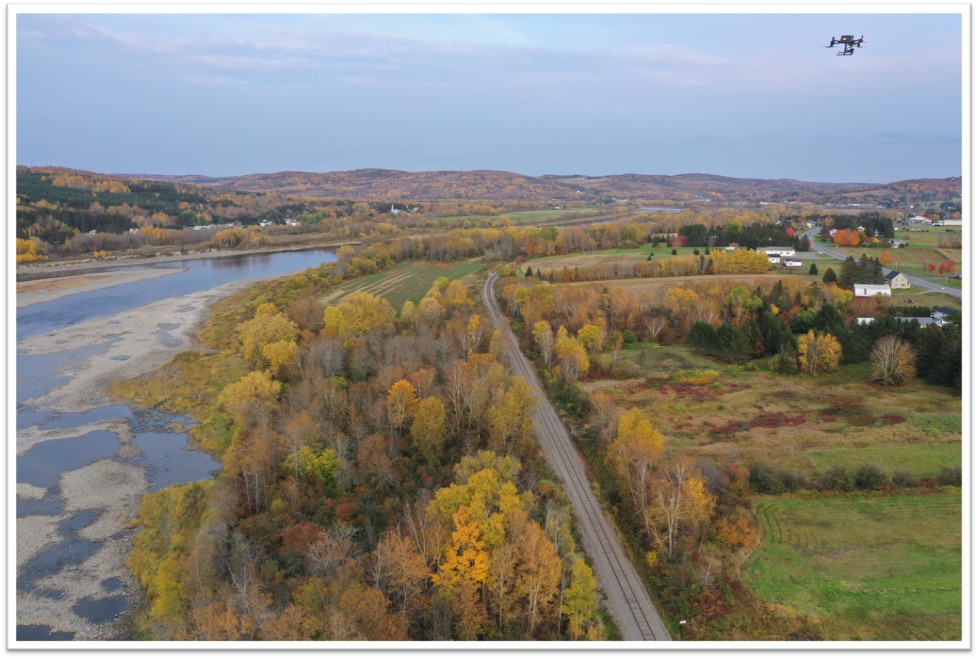
PRESQUE ISLE, Maine — For the past three years, members of the Mi’kmaq Nation have been operating an aerial drone mainly for forestry studies on tribal land.
The drone program may now provide a gateway into aviation careers for members of the tribe, according to Federal Aviation Administration officials who visited tribal leaders last month.
Mi’kmaq Nation Tribal Planner and Grant Writer Dena Winslow and Procurement Officer Sandra McDonald have been piloting the $30,000 drone since 2021, when they used its aerial photography to study the impacts of the invasive emerald ash borer on culturally significant black ash trees. Other members of the tribe have also learned to operate it.
Despite the Mi’kmaq having offices close to the Presque Isle International Airport, career opportunities in aviation have been lacking for them, tribal officials said. FAA officials visited the Mi’kmaq Nation on Nov. 15 and discussed educational opportunities in aviation.
The visit was part of an FAA outreach effort that included stops in Augusta, Bangor, Old Town, and Caribou to meet with airport managers and directors. FAA officials also visited Penobscot Nation members during their trip.
“There’s going to be an expansion of using drones for all kinds of things and certainly we can look to have somebody with that type of expertise come and talk,” said Kenneth Knopp, FAA Deputy Regional Administrator, referring to helping the Mi’kmaq pursue aviation careers.
The Mi’kmaq purchased the drone with a $70,000 grant from the Bureau of Indian Affairs, and traveled to New Hampshire and other parts of Maine for drone training, Winslow said.

In the past month, Mi’kmaq Nation’s Environmental Health Director Shannon Hill has been using the drone to train two more tribal officials to become drone pilots, Winslow said.
“I think [the FAA officials] learned that there is an interest in aviation here at the tribe,” Winslow said. “And certainly an interest in taking advantage of some of [the FAA] programming.”
FAA officials suggested bringing in career pilots to visit the tribe’s education department to share their experiences.
Mi’kmaq leaders spoke to the FAA about eventually planning some trips for youth to experience a career day with workers in the aviation industry, from mechanics to pilots.
“Most of the [tribal] kids are not necessarily exposed to career opportunities in aviation,” Winslow said. “They don’t realize that they could become a pilot if they wanted to fly one of these jets out of Presque Isle.”
According to the FAA website, commercial pilots age out at 65 and the Government Accountability Office cites there are not enough pilots to meet commercial airline needs in the future.
The current Native American Tuition Waiver program pigeon holes tribal students into certain majors with aviation related majors not available, according to tribal administrator Nichole Francis.
“We would like to get our youth and our adults trained in these areas,” Francis said.






